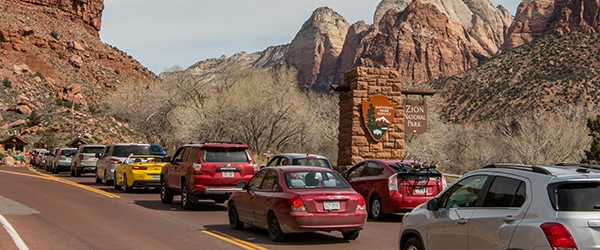
Photo by Kelly Van Dellen
“Western North America boasts an abundance of scenic mountains, ski areas, stunning desert landscapes and national parks. Living near these natural amenities are small communities, many of which are becoming increasingly popular places to live and visit. The influx of visitors creates unique transportation and mobility challenges for these small towns and cities, such as seasonal spikes in severe roadway congestion and a desire for e-bike share programs in communities of less than 1,000 people. These challenges often in turn affect community character and wellbeing. Given their proximity to these impacted communities, NITC researchers Danya Rumore of the University of Utah and Philip Stoker of the University of Arizona were inspired to study and address the mobility and planning challenges in western GNAR (Gateway and Natural Amenity Region) communities. In addition to their newly published study, the research team has also created a new GNAR Community Online Toolkit for the planners working in these small rural towns and cities. Having developed a database of western GNAR communities, they interviewed and surveyed the planners and public officials and identified challenges, solutions, and strategies.” Read more here.
ABOUT THE AUTHORS The research team consisted of Danya Rumore, University of Utah; Philip Stoker, University of Arizona; Zacharia Levine, University of Utah; and Lindsey Romaniello, University of Arizona.
Planning In Gateway And Amenity Communities: Understanding Unique Challenges Associated With Transportation, Mobility, And Access To Opportunity
THE FULL REPORT and ONLINE RESOURCES
For more details about the study, download the full report here.
Explore the GNAR Community Online Toolkit.
Watch an April 26, 2018 webinar.